-
Courses
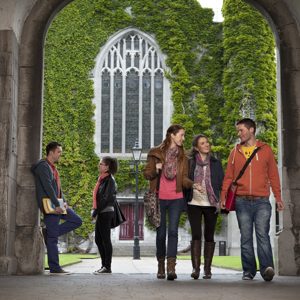
Courses
Choosing a course is one of the most important decisions you'll ever make! View our courses and see what our students and lecturers have to say about the courses you are interested in at the links below.
-
University Life
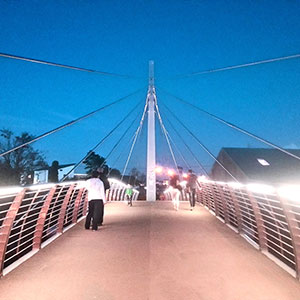
University Life
Each year more than 4,000 choose University of Galway as their University of choice. Find out what life at University of Galway is all about here.
-
About University of Galway
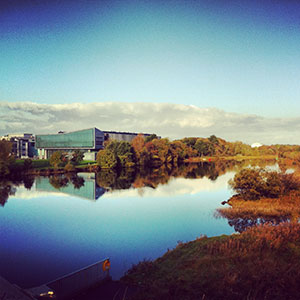
About University of Galway
Since 1845, University of Galway has been sharing the highest quality teaching and research with Ireland and the world. Find out what makes our University so special – from our distinguished history to the latest news and campus developments.
-
Colleges & Schools
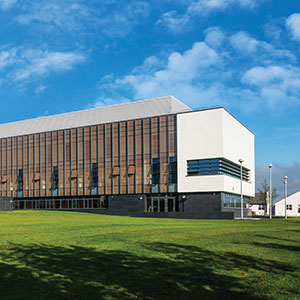
Colleges & Schools
University of Galway has earned international recognition as a research-led university with a commitment to top quality teaching across a range of key areas of expertise.
-
Research & Innovation
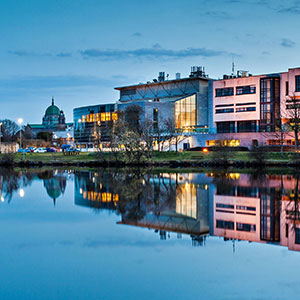
Research & Innovation
University of Galway’s vibrant research community take on some of the most pressing challenges of our times.
-
Business & Industry
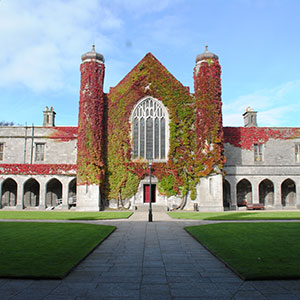
Guiding Breakthrough Research at University of Galway
We explore and facilitate commercial opportunities for the research community at University of Galway, as well as facilitating industry partnership.
-
Alumni & Friends
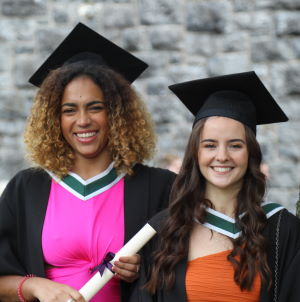
Alumni & Friends
There are 128,000 University of Galway alumni worldwide. Stay connected to your alumni community! Join our social networks and update your details online.
-
Community Engagement
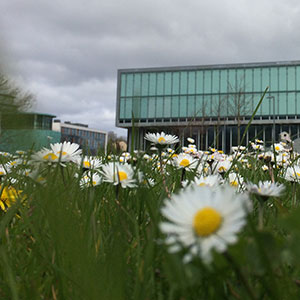
Community Engagement
At University of Galway, we believe that the best learning takes place when you apply what you learn in a real world context. That's why many of our courses include work placements or community projects.
College of Science and Engineering
The Marie Skłodowska-Curie Actions are the European Union’s reference programme for doctoral education and postdoctoral training. The Marie Skłodowska-Curie Actions fund excellent research and innovation and equip researchers at all stages of their career with new knowledge and skills, through mobility across borders and exposure to different sectors and disciplines. MSCA are open to all domains of research and innovation and encourage international cooperation to set-up strategic collaborations.
See below a list of the supervisors particularly interested in hosting MSCA PF candidates.
|
Name of Supervisor |
Research Areas |
Proposed Projects |
Postdoctoral Fellow Expertise |
Additional Information |
|
AI, Machine Learning, Multi-Agent Systems, Reinforcement Learning, Evolutionary Computing, Robotics, Applied AI. |
Collaboration in multi-robot systems. |
Machine learning, simulation, robotics, hardware |
|
|
|
Multi-Objective Decision Making, Multi-Agent Systems, Reinforcement Learning, Optimisation, Game Theory |
|
|
|
|
|
Artificial Intelligence, Computer Vision, Human Computer Interface, Precision Agriculture, Robotics |
In the Era of AI where humans will be working together with machine agents there will be dire need of understanding human intention modelling, which enables agents installed in robots to understand how humans perceive or intend to do. We like to explore such AI models in the context of intelligent manufacturing |
PhD in Computer Science or Robotics or related field |
|
|
|
Biological computing, Molecular computing, Computing using nature-inspired novel substrates. |
Augmenting Foundational Models to Engineer Complex Supramolecular Systems for Nanotherapeutics |
PhD in Computer Science / Biochemistry with keen interest in exploring self-organised computing systems |
|
|
|
Natural language processing, knowledge graphs, artificial intelligence, linked data, lexicography, digital humanities |
Projects related to the application of natural language processing techniques, especially large language models, to areas related to the construction of knowledge graphs, particularly with application to digital humanities areas |
Good knowledge of NLP and related technologies |
|
|
|
Natural Language Processing |
|
|
|
|
|
Computational, Cognitive and Connected Imaging; Computer Vision; Neural Networks (Neural Algorithms, Training Methodologies, Data Augmentations, Generative Data (for Training)); Edge-AI; Neural Speech Processing, Child Speech Processing (text-to-speech and speech-to-text); Multi-modal Imaging (Thermal, NIR, LWIR, Event-Camera, Neuromorphic Vision, etc); Analysis of Human Subjects (Computer Vision, Speech). |
"Sensing without Seeing" - using Event Cameras to provide Security and Privacy when analysing human subjects for their cognitive load, emotional state and behaviours. Use cases in advance HCI (Human Computer Interaction); Training Data Synthesis for Event Cameras and use cases in Embedded Imaging (Neural Accelerators); Improved Child Speech Understanding and Speech Generation; Edge-AI (embedded) Child Speech for Smart Toy platform |
Image, Video, Speech Analysis; knowledge of state of art neural algorithms (vision transformers, diffusion models, etc); Working with Event Cameras or similar asynchronous data signals; work with spiking or sigma-delta NN or equivalent; embedded programming and/or FPGA experience; Neural Speech experience, particularly in low-resource languages or equivalent; experience with training advanced neural models or complex training frameworks; experience with transfer learning and fine-tuning of advanced neural models/architectures. |
|
|
|
Developing advanced numerical tools for the aero/hydro-elastic analysis of onshore and offshore wind turbines, as well as composite structures; Computational mechanics, especially meshless methods and Isogeometric Analysis (IGA); Wind Turbines, Aeroelasticity, Fluid Structure Interaction (FSI), Composite Structures, Computational Mechanics, Meshless Methods, Isogeometric Analysis (IGA) |
|
Strong skills in the mathematical modelling of solids and/or fluids, numerical methods and computer programming |
|
|
|
Composites, Additive Manufacturing, 3D printing, Composite material characterization, Advanced manufacturing and testing of composites, Polymers recycling, FEM |
|
|
|
|
|
Sustainable buildings; Digital twins; Building simulation; Building performance; Energy efficiency; Indoor environmental quality. |
Optimising multi-domain building performance. |
Engineering; Building physics; Building simulation. |
Previous MSCA PF awardee |
|
|
Technology innovation management; Responsible service innovation; Digital service innovation; Operational excellence; Project management |
Digital service innovation: Capability model and performance indicators |
Ability to synthesize and analyse literature, Model development, Advanced statistics e.g. partial least squares structured equation modelling (PLS SEM) Excellent writing skills |
|
|
|
Medical Implants; Soft Robotics; Active Implants; Immunotherapy; Drug Therapy; Ovarian Cancer; Diabetes. |
Medical implants are placed inside the body for medical purposes, usually for long periods. Presently, implant failure is expected and inevitable, and the costs, inconvenience and morbidity that it can impose on patients are largely accepted. Once any foreign object is implanted it triggers a series of cellular events to protect the body, known as the foreign body response. This can lead to the formation of a dense fibrous capsule around the implant that becomes impermeable and can lead to implant failure, as it prevents integration of the implant with the body. This is particularly concerning for implants that rely on harmonious contact with the body, where seamless exchange of molecules is necessary for implant function. Our research group have developed a novel platform which actuates (inflates and deflates in a controlled manner) to interfere with the foreign body response. We have shown that our novel actuatable platform can maintain therapy delivery for eight weeks. A fundamental understanding of the foreign body response over time is required to enable the design of strategies to overcome it. We will explore the longer-term performance of our actuatable implant and the delivery of drug and cell-based therapies through our therapeutic implants for diseases such as Ovarian Cancer and Diabetes. |
PhD in Biomedical Engineering, Immunology (or related field); Experience designing and conducting in vivo assessments OR demonstration of a strong commitment to up-skill; Strong track record in designing and executing in vitro assessments and molecular biology techniques; Demonstration of dynamic, creative thinker and problem solver interested in active therapeutic medical implants. |
https://scholar.google.com/citations?user=VG1V1MEAAAAJ&hl=en |
|
|
Biomaterials, Drug Delivery, Tissue Engineering, Biomaterial Synthesis |
Regeneration by Glyco-functionalisation of Biomaterial Systems |
Strong proven experience in molecular biology or biomaterial synthesis, histopathology, good writing skills, independent and proven track record in high impact journals |
|
|
|
1. Bio-Nano Mechanics (Study of mechanical interactions between nanomaterials and biological systems, focusing on deformation, energetics, failure mechanisms, transport phenomena, and dynamic responses at the bio-nano interface); 2. Multi-Scale Computational Modeling (Development of computational frameworks spanning molecular to continuum-level simulations. Applications include biological tissues, implants, interfaces, and bio-nano systems, integrating molecular dynamics, finite element analysis, and machine learning); 3. Biomimetic Self-Assembling Nanomaterials (Design and engineering of programmable biomimetic nanomaterials that autonomously phase-separate, assemble, and reorganize into functional structures for biomedical applications, e.g., drug delivery, biosensing); Keywords: Bio-Nano Mechanics, Multi-Scale Modeling, Self-Assembly, Biomimetic Materials, Cell-Nanomaterial Interactions, Machine Learning, Biomedical Implants, Computational Biomechanics. |
This project aims to advance the design of self-assembling nanomaterials for biomedical applications by integrating multi-scale computational modelling and experimental validation. The research will focus on understanding how nanomaterials interact with biological systems across spatial scales—from molecular-level self-assembly to tissue-level integration—with applications in targeted drug delivery and biocompatible implants. Using hybrid computational approaches (e.g., molecular dynamics, finite element analysis), we will simulate the mechanical behaviour of bio-nano systems in complex biological environments, validated by experimental data on nanomaterial-cell interactions. Key objectives include: (1) developing computational tools for multi-scale modelling of bio-nano systems, (2) identifying design principles for self-assembling nanomaterials, and (3) prototyping implant coatings with tunable mechanical properties. This interdisciplinary work bridges materials science, computational biology, and biomechanics, offering transformative insights into bio-nano mechanics while addressing critical challenges in personalized medicine and regenerative technologies. |
Strong background in computational mechanics (e.g., molecular dynamics, finite element analysis); Experience with machine learning applied to materials science or biological systems; Knowledge of biomechanics or cell-material interactions; Proficiency in programming (e.g., Python, MATLAB, C++, Jupyter); Optional (Ideally a Plus): Familiarity with nanomaterial synthesis and characterization techniques (e.g., AFM, SEM, DLS). |
1. Candidates with expertise in multi-scale modelling and ML-driven material design are especially encouraged to apply. 2. The lab prioritizes open science; contributions to open-source tools / codes/software are encouraged. 3. While the project focuses on computational and theoretical framework, collaboration with experimental partners will be supported. |
|
|
Environmental Biotechnology; Bioremediation; Methane oxidation; Biofilm development. |
Evaluation of methane oxidation capacity by a biochar immobilised microbial community. Flexibility around specifics to suit candidate but may include microscopy and analysis of biofilm formation, specific metabolic processes and products, or methane adsorption modelling. |
Environmental microbiology, biotechnology, adsorption analysis and modelling, microscopy, biofilm formation analysis. |
Previous MSCA PF awardee |
|
|
Antimicrobial Resistance, MRSA, ESKAPE Pathogens, Bacterial Metabolism, Signalling nucleotides |
Molecular Mechanisms of AMR in the ESKAPE Pathogens |
Molecular Bacteriology, Bioinformatics, Omics, Biochemistry |
|
|
|
My research centres around the application of novel technologies, including omics and machine learning, to investigate the response of microorganisms and microbiomes to changing conditions. Keywords: Microbiology, Machine Learning, Proteomics, Metaproteomics. |
|
|
|
|
|
Aquaculture, lobster biology, farmed aquatic nutrition, novel aquafeeds, circular aquaculture, aquaculture wastewater |
1) Advancing lobster developmental biology, their dietary requirements and aquaculture. 2) Circular aquaculture feed development, 3) Understanding farmed aquatic animal welfare and husbandry requirements |
Background in fish biology and/or lobster biology, applied marine biology |
|
|
|
Marine Ecology |
Improving precision of macroalgal canopy photosynthesis estimates |
Simulation modelling, field work, lab analyses |
|
|
|
Analytical Chemistry; Bioanalytical sciences; Biophysics; Fluorescence spectroscopy; Raman spectroscopy; Chemometrics/Data analysis. |
1) Excitation Emission Fluorescence Lifetime Matrix (EEFLM) spectroscopy: The primary aim of this project is to further develop the Excitation Emission Fluorescence Lifetime Matrix (EEFLM) system (hardware, software, theory, applications) which we can use to validate our ARMES-based methods for the rapid quantitative characterisation of proteins.; 2) Using Total Internal Reflection Fluorescence (TIRF) Microscopy to study the interaction of proteins with surfaces. TIRF localises the fluorescence excitation zone to a nanometre thick (40-200 nm) zone just above the surface of a glass coverslip. This means that only fluorophores in this zone are excited and thus it is an ideal way to study protein-surface interactions; 3) Use of pEEM and single molecule detection (SMD) methods for the quantitative analysis of protein-surfactant interactions. We have an interest to look at how surfactants interact with proteins. The idea being that these types are important for understanding the risks involved in packaging therapeutic proteins in polymer vials. It is also important in the context of understanding problems in the downstream processing of biopharmaceuticals. |
Biophysics, Fluorescence Spectroscopy, Optical Instrumentation. |
|
|
|
Ocean climate; Ocean mixed layer; Air-sea exchange |
Turbulence in the mixed layer and its role in the oceanic uptake of carbon dioxide |
Oceanography background; Matlab/Python coding; field experience; ocean instruments. |
|
|
|
Evolution and systematics (including molecular systematics) of cephalopods; deep sea, with a focus on octocorals (including sea pens); octocoral research comprising of a mix of phylogenetics / systematics and species distribution modelling with a view to supporting conservation of deep-sea habitats. |
|
|
|
|
|
Cybersecurity, Machine Learning, Artificial Intelligence, Cloud Computing, Energy Management |
Building threat detection and projection models using longitudinal machine learning |
Computer Science, Statistics, Machine Learning, Programming |
|
|
|
Self-supervised Machine Learning, Foundation Models, Multi-modal Data Processing, Image and Video Processing, Artificial Intelligence, Autonomous Vehicles, Robot Vision |
Self-supervised learning techniques for Multi-modal data. The candidate can propose a suitable application with substantial impact. |
Knowledge of self-supervised learning, experience in image and preferably multi-modal data processing, experience in PyTorch and TensorFlow. Some experience in robotics will be a plus. |
|
|
|
Nonlinear elasticity; mechanics of soft tissues; electro- and magneto-elasticity; elastic waves |
Anything fitting nonlinear elasticity, mechanics of soft tissues, electro- and magneto-elasticity, elastic waves |
Theoretical mechanics and/or computational mechanics and/or experimental mechanics |
https://scholar.google.com/citations?user=EQAvBLgAAAAJ&hl=en |
|
| Dr. James Cruickshank |
Pure Mathematics, Combinatorics, Topology, Graph Theory, Simplicial Complexes, Discrete Geometry (applications and theory), Geometric and Combinatorial Rigidity Theory, Combinatorial Commutative Algebra, Tensor Completability. |
Applications of rigidity theory to machine learning and data science. I am particularly interested in exploring connections between recent advances in tensor completability and rigidity of simplicial complexes to applications in AI and machine learning. I will help to design a more detailed proposal around these themes, taking account of the candidate's expertise and interests. |
A PhD in a relevant area of mathematics - some expertise in discrete mathematics and/or algebra. |
For more information about my research activities see my personal webpage https://www.jamescruickshank.ie/. |
| Dr. Alexandre De Menezes |
Soil microbial ecology, metagenomics, microbiomes, greenhouse gases, soil carbon, biogeochemistry, antimicrobial resistance in the environment. |
Projects focused on microbial processes linked to greenhouse gas emissions, soil carbon, nitrogen cycling, land use change, antimicrobial resistance. |
|
https://www.demenezeslab.com/ |
| Dr. Davood Roshan |
Statistics, Biostatistics, Statistics in Medicine, Sport Science, Medical diagnosis, health monitoring, Medical devices, AI, Machine Learning |
|
|
|
| Dr. Nathan Quinlan |
Computational Fluid Dynamics, Particle Image Velocimetry, Smoothed Particle Hydrodynamics, Finite Volume Particle Method, Cardiovascular fluid dynamics, Wind and marine energy |
Development of Finite Volume Particle Method; aerodynamic simulation and optimisation of airborne wind energy systems |
CFD, CFD software development, OpenFOAM, wind energy engineering |
|
| Prof. Noel Lowndes |
Genome stability of human cells; Cell cycle regulation; DNA damage response (DDR); DNA double strand break repair; role of kinases and kinesins in the DDR |
|
Three or more of the following: Biochemistry; Bioinformatics; Cell and Molecular Biology; Genetics; Genome editing, Human cell culture; stem cells. Additionally, candidates must have excellent communication and writing skills, as well as a significant publication track record for their career stage. |
Professor Lowndes is an elected member of both the European Molecular Biology Organisation (EMBO) and the Royal Irish Academy (RIA). He is the founding Director of Galway’s Centre for Chromosome Biology (CCB, see https://chromosome.ie/) |
| Prof. Mary Dempsey |
Advancing the design, optimisation and control of complex engineering systems and processes through the integration of Artificial Intelligence and Machine Learning techniques. |
Design and optimisation of health systems through the development of predictive models |
|
|
| Dr. Eoin King |
Acoustic, Noise Control, Soundscapes |
Noise is an increasingly important topic that has not received sufficient research attention in recent years. I welcome proposals that align with and build on the key research themes in my group, including road traffic noise, wind turbine noise, environmental noise, room acoustics, and advanced noise monitoring techniques. I am keen to support technically robust projects in these areas and contribute to impactful research collaborations. |
Acoustics |
|
| Dr. Mingming Tong |
Material science and metallurgy; material processing and manufacturing; fluid dynamics and turbomachinery; computational modelling and digital twins |
Development of novel advanced materials (such as self-healing alloys, high-entropy alloys), digital twins of advance material processing and manufacturing (such as welding, casting and additive manufacturing), advanced material recycling of metals and composites, hydrological modelling and computational fluid dynamics modelling of multi-phase flow and heat transfer problems. |
Metallurgy, material processing, computational modelling, computer programming
|
|
| Dr. Patricia Scully |
Photonics, optical sensing, optical fibre technology, laser processing, optical materials, polymer photonics, carbon nanomaterials and sensor systems. Laser Induced Graphene, triboelectric devices, 3D porous Graphene foam applications in membranes and batteries. Medical devices. Smart conducting surfaces and skins. |
Sensors, medical, chemical and physical sensing. Laser induced graphene and nanomaterials for sensor devices. |
Sensor instrumentation and device characterisation. Advanced functional materials. Laser processing, micro and nanomachining, holographic inscription. Medical devices based on conducting polymers, nanomaterials and photonics, environmental monitoring, batteries and charge generation using triboelectric generators. Polymer optical fibres and polymer waveguides for sensing. Sensor systems analysis, data extraction and processing using signal processing ranging from tomography to machine learning. Interests in translational research, innovation, manufacturing and scale-up.
|
https://www.universityofgalway.ie/photonic-sensors/ |
| Dr. Paul Sheridan |
Soil metagenomics, microbial genome evolution, microbial utilization of organic phosphorus. |
1) Determining the origins of bacterial pathogenicity through genome evolutionary analysis. 2) Microbial utilization of organic phosphorus in soil |
PhD in Microbiology or related field. Strong background in microbiology, molecular biology and bioinformatics
|
|
| Dr. Catalina Vallejo Giraldo |
Brain Diseases; Brain Mechanobiology; Biomaterial Interfaces; Glioblastoma
|
|
Demonstrated expertise in molecular biology, biomaterial synthesis, and fabrication techniques. Strong writing skills with an independent research background and a proven track record of publications.
|















